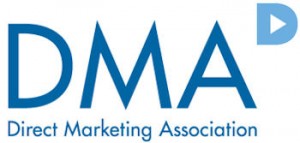How Does Your Direct Marketing Measure Up?


Fortunately, the Direct Marketing Association (DMA) recently released the 2010 Response Rate Trend Report which provides key cost and performance benchmarks to help marketers gauge the efficiency of their campaigns.
Initially created in 2003 to detail the typical response rate for direct marketing campaigns in particular professions as well as the channels that yield the best response, this edition marks the seventh in the series. Since the report's inception, interactive channels have multiplied and become a critical part of business. This year's updated edition reflects the breadth of today's landscape with full coverage for five media: Direct Mail (five formats: letter-sized envelopes, postcard, oversized envelopes, dimensional, and catalog); Email; Paid Search; Internet Display; and Telephone. It also contains additional data on Mobile (SMS and Display); DRTV; DR Radio; Magazine and Newspaper Space Advertising; Inserts; Fax; and Digital Out-of-Home.
Some of the more interesting findings include:
- Email to a house list averaged: a 19.47 percent open rate; a 6.64percent click-through rate; a 1.73 percent conversion rate; with abounce-back rate of 3.72 percent and an unsubscribe rate of 0.77 percent.
- Response rates for Direct Mail have held steady over the past four years.
- Letter-sized envelopes, for instance, had a response rate this year of 3.42 percent for a house list and 1.38 percent for a prospect list.
- Catalogs had the lowest cost per lead/order of $47.61, just ahead ofinserts at $47.69, email at $53.85, and postcards $75.32.
- Outbound telemarketing to prospects had the highest cost per order or lead of $309.25, but it also had the highest response rate from prospects of 6.16 percent. The highest response rate for a house list was also telephone, at 10.41 percent.
- Paid search had an average cost per click of $3.79, with a 3.81 percent conversion rate. The conversion rate (after click) of internet display advertisements was slightly higher at 4.43 percent.
- Response rates for B-to-B campaigns were generally higher than for B-to-C campaigns. Lead generation and high-end average sale campaigns also had higher response rates.
- Nearly 60 percent of direct mail campaigns in financial services aimed to produce a direct sale. The average response rate was a comparatively low 2.66 percent to a house list and 1.01percent to a prospect list.
So how do these numbers compare to your own results? In Doc's experience, you can't judge yourself too harshly against these averages because so much depends on what you're selling and how you're following up with the leads you do get. But these numbers are a starting point in trying to figure out what you're doing right, or wrong as may be the case!